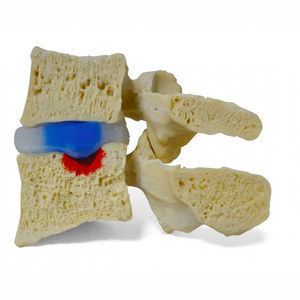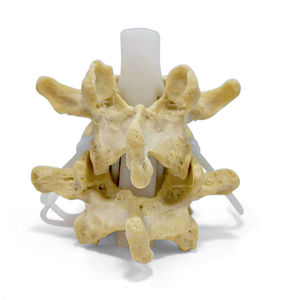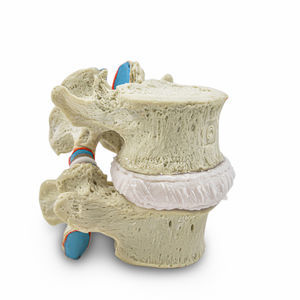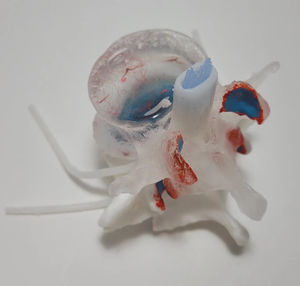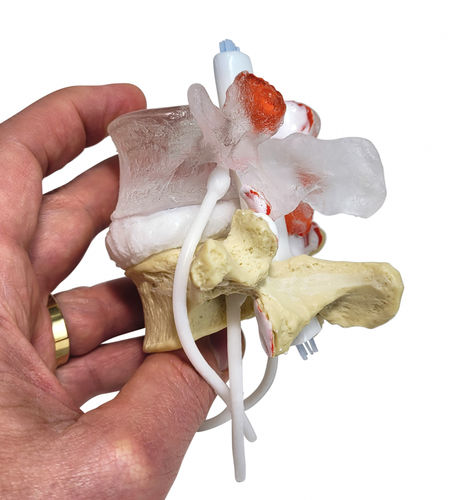
- Primary care
- General practice
- Intervetebral disc model
- Dynamic Disc Designs Corp.
Lumbar vertebra anatomical model Professional LxHintervertebral discfor teachingwith nerves

Add to favorites
Compare this product
fo_shop_gate_exact_title
Characteristics
- Area of the body
- lumbar vertebra, intervertebral disc
- Procedure
- for teaching
- Accessories
- with nerves
- Color
- white
- Other characteristics
- flexible
Description
The Professional LxH Dynamic Disc Model is a remarkable human bony replica designed to showcase the intricate dynamics of a functional motion segment of the spine. This lumbar disc model recreates the L4 and L5 lumbar vertebrae, complete with the soft tissue components of the intervertebral disc. It also includes the annulus fibrosis and nucleus pulposus. With its realistic characteristics, this model sets itself apart by providing a dynamic representation, specifically highlighting herniation.
Description
The Professional LxH Dynamic Disc Model is an exceptional tool for anatomical teaching and biomechanics. It grants a comprehensive understanding of the human spine, featuring the L4 and L5 lumbar vertebrae. It also offers a two-part intervertebral disc, complete with the annulus fibrosis and nucleus pulposus.
One of the key features that make this lumbar disc model unique is its ability to showcase the dynamic nature of the spine. It accurately demonstrates the range of motion and interplay between the vertebrae, soft tissues, and intervertebral discs. As a result, it excels in depicting herniation.
The Professional LxH Dynamic Disc Model finds utility in various fields, making it an indispensable lumbar disc model for chiropractors, physiotherapists, spine surgeons, neurosurgeons, personal injury lawyers, teachers, and educators. It serves as an invaluable aid for anatomical teaching, biomechanics, patient education, student teaching, and spinal anatomy classes.
VIDEO
Catalogs
Other Dynamic Disc Designs Corp. products
Lumbar Single Level
Related Searches
- Anatomy model
- Demonstration anatomical model
- Teaching anatomy model
- Surgical anatomical model
- Bone anatomical model
- Flexible anatomical model
- Transparent anatomical model
- White anatomical model
- Vertebral column model
- Pelvic anatomical model
- Nervous system model
- Anatomical model with nerves
- Lumbar vertebral column model
- Cervical model
- Beige anatomical model
- Intervetebral disc model
- Nervous anatomy model
- Injection model
- Puncture anatomy model
- Gynecological anatomical model
*Prices are pre-tax. They exclude delivery charges and customs duties and do not include additional charges for installation or activation options. Prices are indicative only and may vary by country, with changes to the cost of raw materials and exchange rates.








